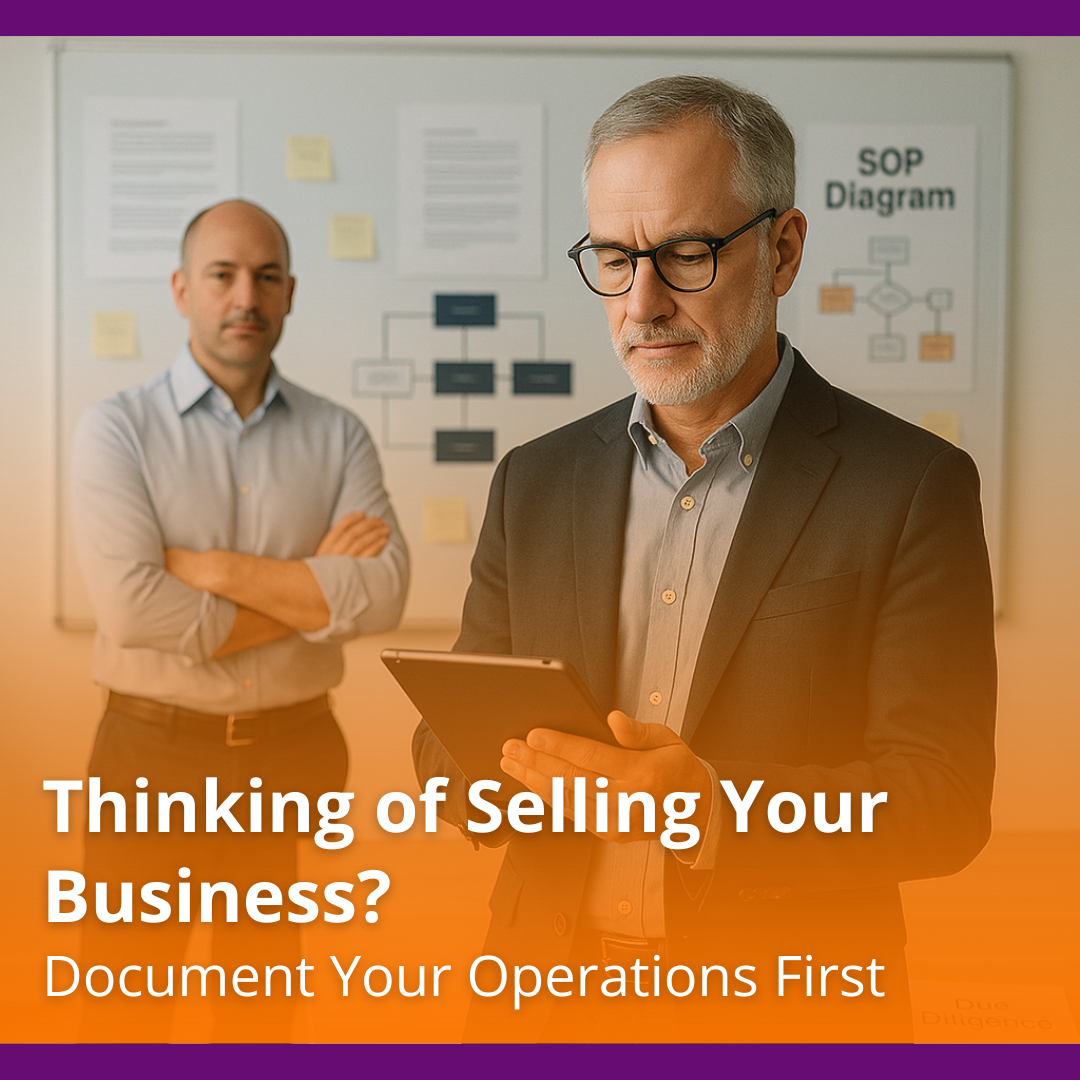Thinking of Selling Your Business? Document Your Operations First
Running a business means knowing every moving part. But to a buyer, that knowledge means nothing if it isn’t documented. And that’s a...
Comprehensive, data-driven valuations and comparative equity analyses to accurately price your practice, establish market benchmarks, and support informed decision-making.
Comprehensive M&A guidance encompassing deal structuring, negotiation strategies, market listings, and transaction closings.
Comprehensive systems, targeted coaching, and in-depth assessments designed to optimize operational efficiency and enhance advisory team effectiveness.
Strengthen continuity through the implementation of formal continuity agreements, the establishment of legal entities, execution of enforceable legal contracts, and securing appropriate capital resources.

Growing by acquisition is one of the fastest ways to scale — but it’s also one of the easiest ways to stumble. Behind every successful deal is a disciplined plan that goes far beyond a handshake and a price tag.
Here are four powerful — and often overlooked — lessons from an expert’s guide to acquiring a financial advisory practice.
The first step in any acquisition isn’t finding the target — it’s building your team.
Many entrepreneurs make the mistake of hunting for deals before they have the right professionals in place. A strong acquisition team helps you make smart, defensible decisions at every stage.
You’ll need:
Start with the right experts, and you’ll avoid costly mistakes that can derail even the best-looking opportunity.
Smart buyers know there’s no single “right” price. Value is a spectrum, shaped by three key financial lenses:
Each method has blind spots — combining them gives you a more complete and defensible valuation. And remember: numbers alone don’t tell the story. A good deal balances financial logic with cultural and client alignment.
Signing the purchase agreement doesn’t mean you’re done — it means you’re just getting started.
Poor post-close integration can quickly erode trust and value.
Focus on:
The deal isn’t won at closing — it’s won in the months that follow.
An acquisition lives or dies in the fine print. Legal and tax details determine how smoothly the transaction unfolds — and how much of the value you actually keep.
Key factors include:
These technical choices shape your financial outcome for years to come — and they’re exactly why your expert team matters most.
Buying a business isn’t just about finding the right opportunity — it’s about executing with discipline, strategy, and precision.
The best acquirers know: you don’t just buy growth — you build it, protect it, and integrate it with care.
Anthony "Tony" Whitbeck, CFP®, CLU®, is CEO and Owner of Advisor Legacy. He began his career as a financial advisor in 1989 and later shifted to coaching, where he’s guided more than two hundred advisory practices through growth, valuation, and succession. Tony leads Advisor Legacy’s certified third-party valuation engagements and coordinates lending and legal partners to streamline transactions. His articles focus on building transferable enterprise value, mapping internal vs. external exits, and avoiding common succession pitfalls. Drawing on decades of in-the-trenches experience, Tony provides practical, compliance-friendly guidance advisors can use right away.
Receive timely articles, tip sheets, events, and more right in your inbox.

Running a business means knowing every moving part. But to a buyer, that knowledge means nothing if it isn’t documented. And that’s a...

Growing by acquisition is one of the fastest ways to scale — but it’s also one of the easiest ways to stumble. Behind every successful deal is a...

The M&A landscape in financial services isn’t slowing down. It’s evolving. Fast. As of mid-2025, deal values in the sector have surged by...